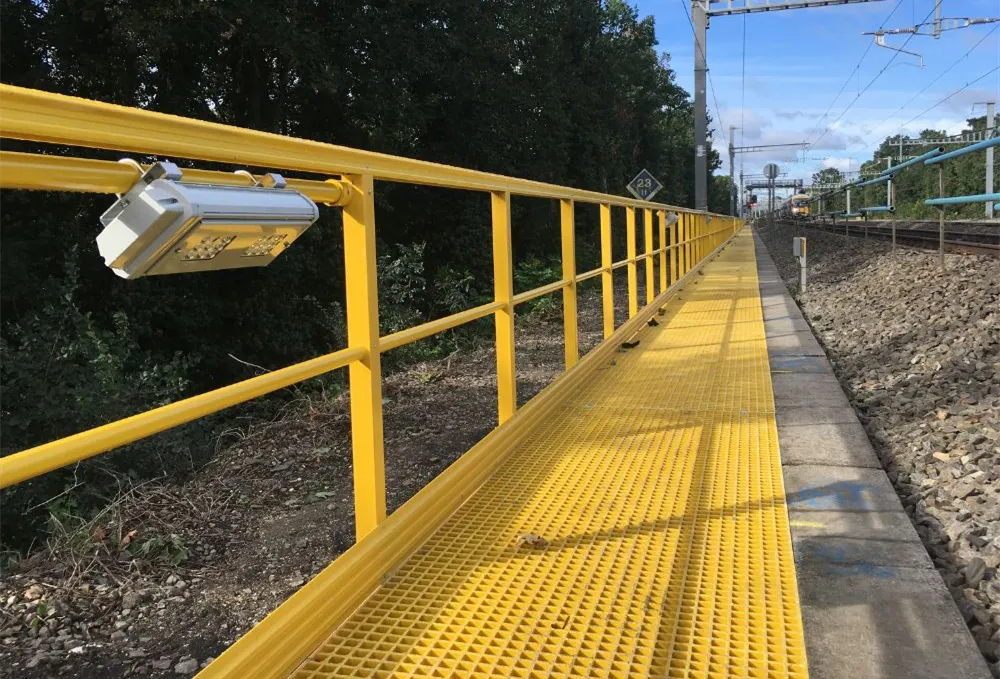loading...
- No. 9, Xingyuan South Street, Dongwaihuan Road, Zaoqiang County, Hengshui, Hebei, China
- admin@zjcomposites.com
- +86 15097380338
- Welcome to visit our website!
fiberglass floor grating
Fiberglass Floor Grating A Comprehensive Overview
Fiberglass floor grating, also known as fiberglass reinforced grating (FRP grating), is a versatile and innovative product that has been gaining popularity across various industries. This type of grating is made of glass fibers embedded in a resin matrix, which gives it a combination of high strength, low weight, and excellent corrosion resistance. As industries look for alternative materials that cater to different environmental conditions, fiberglass floor grating stands out as a reliable choice for numerous applications.
Key Advantages of Fiberglass Floor Grating
1. Corrosion Resistance One of the most significant advantages of fiberglass floor grating is its inherent resistance to various corrosive agents. Unlike traditional materials like steel or aluminum, fiberglass does not rust or corrode when exposed to harsh chemicals, making it ideal for environments such as chemical plants, wastewater treatment facilities, and food processing plants.
2. Lightweight and Easy to Install Fiberglass grating is much lighter than its metal counterparts, which facilitates easier handling and installation. This lightweight characteristic can lead to reduced installation costs and less strain on structural supports, enhancing the overall efficiency of construction projects.
3. Non-Conductive Properties Fiberglass is a non-conductive material, which means it does not conduct electricity. This property makes fiberglass floor grating a safe option for areas where electrical safety is a concern, such as power plants or industrial facilities.
4. Durability Under Heavy Loads Despite its lightweight nature, fiberglass floor grating is incredibly strong and can support heavy loads. Its strength-to-weight ratio is superior, allowing it to withstand significant pressure without deforming or breaking. This makes it suitable for heavy industrial applications where traditional materials may fail.
5. Enhanced Slip Resistance Many fiberglass grating products come with slip-resistant surfaces, providing improved safety in environments where spills or wet conditions are common. This feature is vital in preventing accidents in industries where worker safety is paramount.
6. Customization Options Fiberglass floor grating can be manufactured in various sizes, shapes, and colors to meet specific project requirements. Whether you need a specific load-bearing capacity or a particular aesthetic, customization options are readily available.
fiberglass floor grating

Applications of Fiberglass Floor Grating
The versatility of fiberglass floor grating opens up a wide range of applications. Here are some common uses
- Industrial Flooring In manufacturing and processing plants, fiberglass grating is utilized for walkways, platforms, and machine bases. Its durability and safety features make it an ideal choice for high-traffic areas.
- Wastewater Treatment Facilities The corrosive nature of sewage can damage traditional flooring materials. Fiberglass grating provides a long-lasting solution in these environments, ensuring minimal maintenance and long service life.
- Chemical Plants Handling various chemicals can pose risks to equipment and personnel. Fiberglass grating's chemical resistance makes it the preferred choice for flooring in chemical processing facilities.
- Commercial and Retail Spaces Beyond industrial applications, fiberglass floor grating is also used in commercial settings, such as shopping malls and outdoor spaces. It can provide visually appealing designs while maintaining practical benefits.
Conclusion
Fiberglass floor grating presents a host of advantages over traditional materials, including corrosion resistance, lightweight characteristics, and enhanced safety features. Its broad range of applications makes it a suitable choice for industrial, commercial, and even residential uses. As industries continue to seek materials that offer durability, safety, and cost-effectiveness, fiberglass floor grating is likely to remain a go-to solution. By investing in fiberglass grating, companies can not only improve their operational efficiency but also create safer working environments for their employees. With ongoing innovations in material science, the future of fiberglass grating looks promising, with potential advancements that could further enhance its functionality and applications.
-
Premium FRP Handrail for All ApplicationsNewsAug.29,2025
-
Low Maintenance FRP Mini Mesh Grating ProductsNewsAug.29,2025
-
Innovative FRP Square Tubes for Modern Industrial SolutionsNewsAug.29,2025
-
FRP Water Storage Tanks Wholesale Solutions for Bulk BuyersNewsAug.29,2025
-
FRP Molded Grating Solutions for Diverse Industrial ApplicationsNewsAug.29,2025
-
Construction Advancements Through FRP Pultruded ProfilesNewsAug.29,2025
-
Why Choose FRP Railings, Guardrails, and Handrail Systems?NewsAug.29,2025
